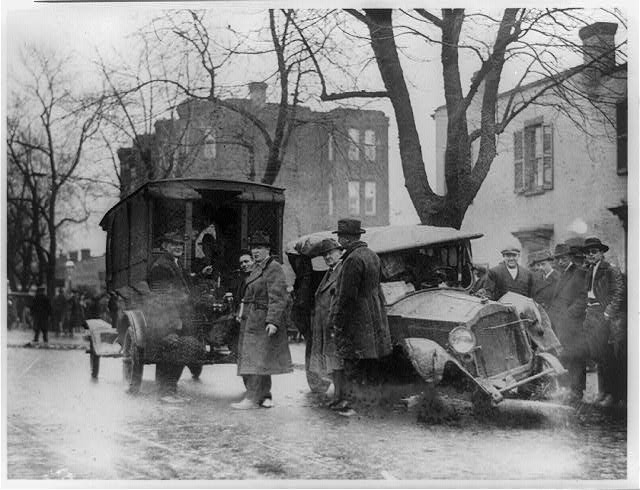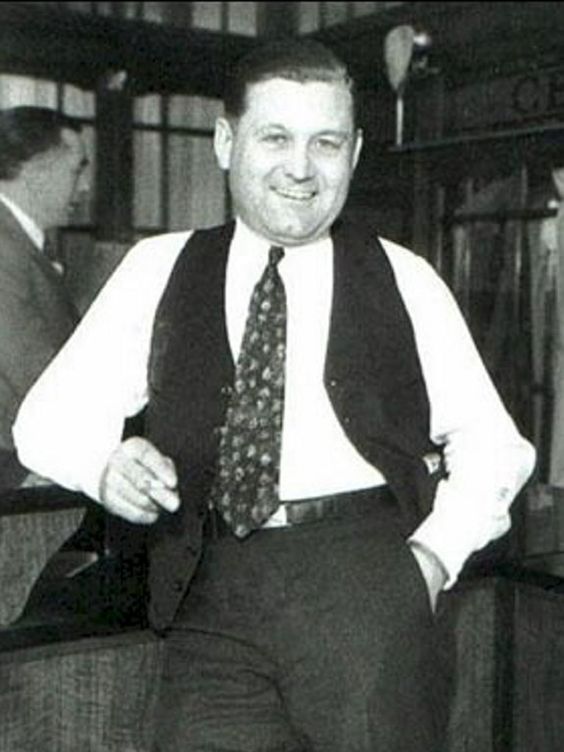Bootleggers and Bathtub Gin
Scroll to read more



Bootleggers and Bathtub Gin
In the early 1920s, the Genna brothers gang provided hundreds of needy people in the Little Italy section of Chicago with one-gallon copper “alky cookers,” or stills, to make small batches of homemade liquor in their kitchens. The Gennas furnished the corn sugar and yeast. When the gang’s henchmen made the rounds to these family enterprises, they paid a nice return of $15 (about $188 in 2016) each day to oversee production of gallons of pure alcohol. The Gennas made a tidy profit – the illegal liquor cost them only 50 to 75 cents per gallon, and they sold it to speakeasies for $6. In New York, gangster Frankie Yale also paid Italian-Americans $15 per day to run alky cookers in Brooklyn.
These family moonshiners were among countless small- and big-time illegal alcohol producers during Prohibition. Some of these moms and pops bottled their own liquor at home. They used a small still to ferment a “mash” from corn sugar, or fruit, beets, even potato peels to produce high-proof alcohol, then mix it with glycerin and a key ingredient, a touch of juniper oil as a flavoring. To turn this highly potent liquid into a rank “gin,” they needed to water it down by half. But their bottles often were too tall to fit under the spigot in the kitchen sink, so they used the one in the bathtub.
But few could tolerate the bad taste of this “bathtub gin.” Bartenders in speakeasies blended ounces of it with various mixers from bitters to soda pop, juices and fruit garnishes, to hide the flavor of the poorly made alcohol. While mixed drinks certainly predated Prohibition (the origins of the rum drink “Mojito” may date back to the 16th century), they were necessary during Prohibition. The Prohibition era’s speakeasies made the cocktail fashionable.
In large cities and rural areas, from basements and attics to farms and remote hills and forests across America, moonshiners and other bootleggers made it virtually impossible for Prohibition Bureau agents to enforce the Volstead Act’s national ban on making and distributing liquor. The bureau seized almost 697,000 stills nationwide from 1921 to 1925. From mid-1928 to mid-1929 alone, the feds confiscated 11,416 stills, 15,700 distilleries and 1.1 million gallons of alcohol. The bigger stills were known to churn out five gallons of alcohol in only eight minutes. Commercial stills in New York could put out 50 to 100 gallons a day at a cost of 50 cents per gallon and sell each one for $3 to $12. By 1930, the U.S. government estimated that smuggling foreign-made liquor into the country was a $3 billion industry ($41 billion in 2016).
Grocery and hardware stores legally sold a laundry list of what home distillers and beer brewers needed – the gallon stills, bottles, malt syrup, corn sugar, corn syrup, hops, yeast and bottle cappers. Americans, based on Prohibition Bureau estimates, brewed 700 million gallons of homemade beer in 1929. Chain grocery markets such as Kroger and A&P sold the popular beer-making ingredient malt syrup in cans. By 1927, national production of malt syrup hit nearly 888 million pounds – enough to make more than six billion pints of homemade beer.
Many Americans were able to use Prohibition’s exemptions to their advantage. The person largely responsible for writing the Volstead Act in 1919 was Wayne Wheeler, head of the powerful, pro-dry Anti-Saloon League. Wheeler was instrumental in persuading Congress to vote for the law. Yet Wheeler, to get Volstead through Congress, had to permit some loopholes in the law that would loom larger than he had envisioned.
Licensed doctors were permitted to prescribe whiskey, other distilled spirits (from government-licensed distilleries) and wine as treatments for aliments, limited to one pint every 10 days. The law also allowed the manufacture and sale of wine used in sacraments or other religious rituals by rabbis, priests, “ministers of the gospel” and their designees. Both loopholes were abused. Doctors and pharmacists made a lot of money issuing the expensive prescriptions to patients for colds and sore throats. Bonded distillers and winemakers (with government permits) who provided the liquor also made out. Wineries such as Beaulieu Vineyards, Beringer and Louis M. Martin owed their rise as big businesses to making sacramental wine for clergymen, who essentially became bootleggers for their congregations.
One of the largest exceptions to Volstead concerned winemaking at home. In October 1920, eight months after Prohibition took effect, the Treasury Department issued a statement clarifying Section 29 of Volstead concerning manufacturing fruit juices at home without a federal permit. The statement specifically addressed winemaking: “the head of a family who has properly registered may make 200 gallons [of wine] exclusively for family use without payment of tax thereon.” That meant families could generate — but not sell or transport — the equivalent of 1,000 bottles of wine a year, or 2.7 bottles per day for home consumption, without paying taxes.
The regulation — certainly not what Wheeler had intended — led to a nationwide surge in home-fermented wines and related businesses during Prohibition. From 1925 to 1929, 679 million gallons of homemade wine passed through the lips of Americans – triple the amount they drank in the five years leading up to Prohibition. The acreage farmers in California devoted to growing wine grapes expanded from 97,000 to 681,000. The price for a ton of grapes, only $9.50 in 1919, rose to an astonishing $375 by 1924.
Grape producers made concentrates from crushed grapes, with the stems and skins, in liquid form in multi-gallon cans or dehydrated and compressed into solids known as “grape bricks” or “raisin cakes.” The concentrates were ostensibly for making non-alcoholic grape juice, but both the businesses and consumers knew they were really for winemaking. Under Prohibition laws, these businesses could face federal penalties for knowingly providing the makings of alcoholic beverages, but they did it anyway, selling them in a variety of wine grapes, including port, sherry, Riesling and Burgundy. A San Francisco company touted its liquid concentrate product, Vine-Glo, as “legal in your home under the provisions of Section 29, National Prohibition Act,” but warned that the wine “must not be transported.” One wine brick company, with a barely disguised hint, wrote on the packages of its product: “After dissolving the brick in a gallon of water, do not place the liquid in a jug away in the cupboard for twenty days, because then it would turn to wine.”
Meanwhile, racketeers, in addition to buying whiskey and other liquors smuggled from Canada, Great Britain and Mexico, manufactured alcohol. Some racketeers bought up closed breweries and distilleries and hired former employees to make the same products illegally. Others corrupted brewers otherwise engaged in the production of legal “near beer.” Under Volstead, owners of breweries were allowed to make beer containing no more than one half of one percent alcohol by volume. To do that, legal brewers had to brew the beer and then remove the leftover alcohol to reach the legal level. Some brewers switched to soft drinks, “cereal” drinks and other legal beverages, while others gave in to the temptation to deal with gangsters, who paid cash for the higher-percentage alcohol beer. Chicago racketeer Johnny Torrio, in the months after Prohibition began in 1920, partnered with two other mobsters and legitimate brewer Joseph Stenson to manufacture for sale illegal beer in nine breweries. Torrio convinced hundreds of street criminals they could become wealthy by cooperating in the secret beer distribution racket to speakeasies, organized within agreed-upon and strictly enforced territories in the city. He and his partners took in $12 million a year in the early 1920s. Torrio later turned control of his Chicago bootlegging racket over to his successor, Al Capone.
Racketeers also stole millions of gallons of industrial grain alcohol and redistilled it for sale in speakeasies. But it could be unsafe to drink. Industrial alcohol, undrinkable and thus exempted by the Volstead Act, was used in cleaning products, paints, cosmetics, gasoline, tobacco, scientific research and other legal uses. To render it undrinkable, the liquid was “denatured” with chemical additives such as wood alcohol, ether or benzene. Industrial alcohol, unlike drinkable alcohol, was not taxed, but the government required manufacturers to blend a small amount of the additives to give the alcohol a terrible taste and smell to deter people from drinking it.
One common early additive, approved by the U.S. government, was wood alcohol, which was poisonous if swallowed and could cause nerve damage, blindness and death. Bureaucrats surmised that since wood alcohol could not be completely boiled and removed from industrial alcohol, no one would drink it. But profit-hungry gangsters who stole industrial alcohol thought they could do it with their own chemists. They heated it and removed some of the additive, but dangerous traces of wood alcohol remained. This “rotgut” liquor used in mixed drinks poisoned thousands of speakeasy customers. As many as 50,000 drinkers died from tainted alcohol during Prohibition. Amid public outrage, by 1927 the government sought to deter bootleggers further, ordering industrial alcohol producers to double the added wood alcohol content and add kerosene and pyridine to make it taste far worse and nearly impossible to remove. But the damage was done, to both the population and the government’s political standing with the public.